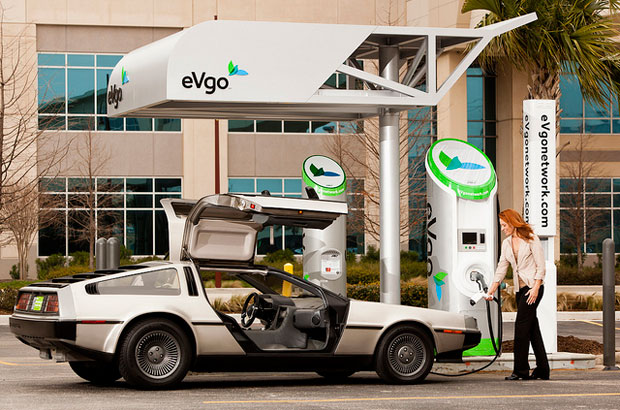Building on a long tradition of leadership in both sustainability and innovation, Seattle is one of the largest electric vehicle (EV) markets in the country. And Seattle is a great place to lead the EV charge. With Seattle City Light providing carbon-free electricity since 2005, electric vehicles are a great way to reduce emissions and replace oil with clean energy. To this end, the city recognizes the importance of expanding the EV charging network to facilitate EV adoption by residents, businesses, and major local fleet operators. But this is just part of the story. Washington is part of the drive to bring 3.3 million EVs to the west coast by 2025. The mission is a part of the overarching goal of eight west coast states to decrease their carbon footprint and reduce emissions. The community of electric vehicle drivers is growing as charger counts increase, not just locally but across states, and perceived barriers are removed. Electric vehicle infrastructure company NRG EVgo is taking the lead in asking "how do we bring drivers the most convenient charging experience where and when they need it?" The answer is DC fast charging.
The Road to 3.3 Million EVs
There have been some bumps along the road to 3.3 million EVs in the U.S. Confidence in EVs’ range and the ability for drivers to find a charging station when they need one are important considerations. Level 2 (L2) charging began the conversation on how to charge EVs coming into the market to meet state goals. However, many drivers need something faster to match the need to drive and charge with confidence. DC fast charging makes the rapid adoption of EVs not just an idea, but a reality.
The Challenge with L2: Long Waits and Longer Road Trips
The early vehicle charging landscape existed of a network predominantly supported by L2 charging. Interrupt your drive for a stop to charge your EV at an L2 charger, and you’ll be waiting hours to refuel your vehicle. This model fails consumers who need to quickly charge, and limits driving distance. L2 is a great option for home charging but fails to support longer driving ranges. NRG EVgo is passing major milestones in DC fast charging, seeing the gap left by the L2 experience. They don’t want to just bring electric vehicle charging to drivers. They are advancing drivers’ ability to charge quickly and get back on the road. Want to get from Seattle to Portland without taking a 4 hour pit stop to charge? Life doesn't have time to wait for a vehicle to charge. DC fast charging provides a solution.
DC Fast Charging Isn’t the Future, It’s Today.
Drivers want a faster charge. It’s not a coincidence that 5:1 EVgo drivers prefer DC Fast charging over L2. The numbers speak for themselves. As NRG EVgo CEO Arun Banskota remarked in his recent interview with Charged Magazine, “The purpose of the EVgo network is to provide all EV drivers, no matter the make of their vehicle, with confidence in their ability to travel.” EVgo has more public fast chargers than any other public network. EVgo’s timely expansion in the Northwest supports the goal to bring more electric vehicles on the road and the driving communities’ need for to the best charging experience possible.
EVs are here for the long haul and they need a charging network to support their adoption. Drivers are seeing the benefits of electric vehicle ownership and making the transition. There are now more than 350,000 electric cars on American roads “One thing is for certain: the network will never be complete, because we will always continue to build Freedom Station sites to meet the needs of the rapidly expanding EV driver base,” commented Banskota. The EVgo network has doubled in size in the past eight months and is operating more than 350 DC fast chargers. As the EV community expands, so does EVgo’s charger count. Growing to ensure drivers have access to a fast charging network that matches the need to charge faster and drive farther.


